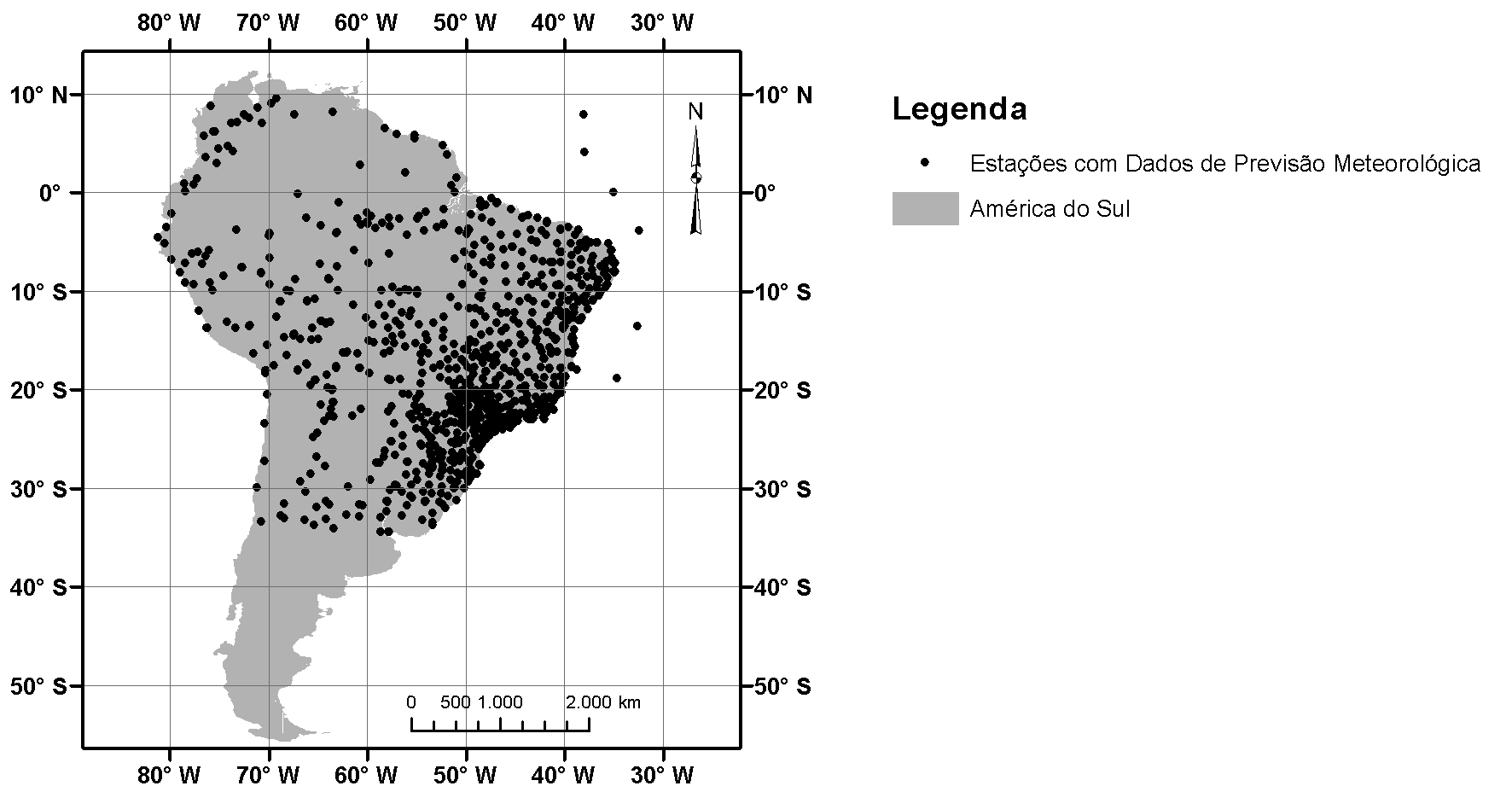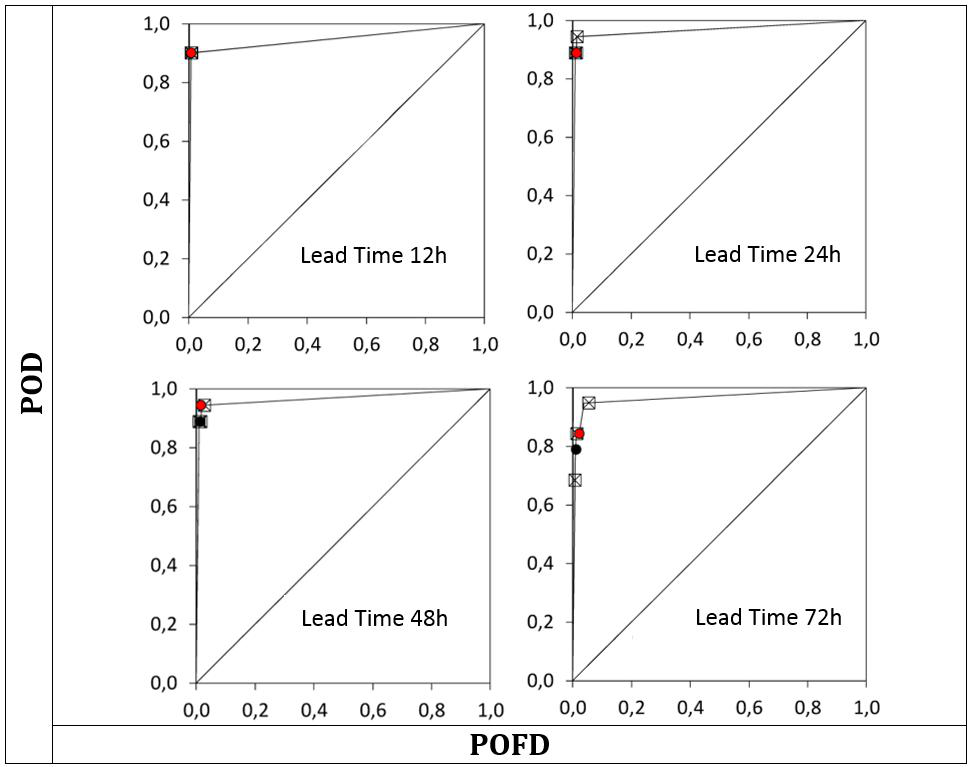Ensemble forecasting experiments in a medium size tropical basin using MASTER rainfall forecasts
Contributed by Adalberto Meller and Fernando Fan, members of the LSH Research Group Guest Columnist Team
As we have seem in our first post, great advances occurred in Brazil in the last years concerning the development of flood alert systems, but still today there is a low number of operational systems in terms of territory coverage, especially those using a probabilistic approach.
One of the first researches in Brazil to evaluate ensemble flood forecasts in South America was presented by Meller (2012) and Meller et al. (2014), but only published in Portuguese. Today we are using HEPEX space to present it to the broader community.
Figure 1. Paraopeba basin location.
The research assessed the performance of a short term ensemble flood forecasting system in a medium size tropical basin, the Paraopeba River Basin (Figure 1), based on data and streamflow forecasting tools available in operational mode in Brazil. The methodology consisted in the use of the MGB-IPH hydrological model, coupled to an ensemble of rainfall forecasts generated by several models with different initial conditions and parameterizations.
The weather forecast database used in the study comprised 50 outputs of NWP (numerical weather prediction) models, which differs in the type of model (global or regional), spatial resolution, parameterization, initial and boundary conditions. The preparation of this database came from an initiative of the Meteorologia Aplicada a Sistemas de Tempo Regionais Laboratory (MASTER-IAG/USP Lab) – in cooperation with other centers aiming conducting an intercomparison and combination activity of NWP models (Silva Dias et al., 2006).
Weather forecasts were issued by the centers of many countries once or twice a day (00:00 UTC or 12:00 UTC), with lead times between 48 and 168 hours, generally accumulated every six hours. Upon receipt, weather forecasts are interpolated by the MASTER-IAG laboratory to points corresponding to the latitudes and longitudes of a wide network of surface monitoring gauges in South America (Figure 2).
Figure 2. Location of surface stations where weather forecasts are provided by the MASTER Lab.
Besides the ensemble, a single deterministic streamflow forecast is also given by MASTER Lab, based on a quantitative precipitation forecast derived from the optimal combination of several outputs of NWP models . It was used as the reference forecast to assess the performance of the streamflow ensemble forecasts at the Paraopeba basin.
The aim of the reduction technique applied by MASTER Lab is to get a deterministic forecast with better performance than the arithmetic mean of the whole or any of the ensemble members. The methodology used by MASTER Lab is to assign different weights to each of the ensemble members in the composition, according to their performance in a period of 15 days prior to the forecast.
Using MASTER Lab data, flood forecasts were performed for three rainy seasons (austral summer) between 2008 and 2011. Figure 3 shows the results of forecasts from December 2009. The results from the ensemble flood forecasts were assessed by deterministic and probabilistic performance metrics.
Figure 3. Ensemble forecasts from December 2009 at the Paraopeba river.
General deterministic assessments showed that the ensemble mean have similar performance to those obtained by the deterministic reference forecast (the best forecast according to MASTER Lab), although showing better performance over most of the ensemble members. Based on the probabilistic performance measures, however, results showed the existence of an ensemble overforecasting and underspread of the members in regard to observed values, especially during initial lead times.
Results for predictions of dichotomous events, which tested the exceedance or not of a flood warning thresholds, showed that the 9th decile of the ensemble over performed the deterministic forecast and even the ensemble mean. In most cases, it was observed an increase in the proportion of correctly forecasted events while keeping false alarm rates at low levels. This benefit was generally higher for higher flow thresholds and for longer lead times, which are particularly important situations for flood mitigation.
Figure 4 shows results of ROC diagrams for 12, 24, 48 and 72 hours lead time and for the flow threshold of 623 m³/s, which is an estimated situation of lower channel extravasation of the river Paraopeba.
Figure 4. ROC diagrams at 12, 24, 48 and 72h lead times and flow 623 m³/s (threshold). Squares represent the ensemble percentiles 1º, 5º and 9º. The Red dot is the deterministic reference and the black dot is the ensemble mean.
References:
- Meller, A. (2012). Short Term Ensemble Flood Forecasting (Previsão de Cheias por Conjunto em Curto Prazo). PhD Thesis. Federal University of Rio Grande do Sul. Hydraulic Research Institute. 224p.
- Meller, A., Collischonn, W., Fan, F. M., Buarque, D. C., Paiva, R. C. D., Dias, P., Moreira, D. Short Term Ensemble Flood Forecasting. Revista Brasileira de Recursos Hídricos, v. 19, p. 33-49, 2014.
- Silva Dias, P.L., Moreira, D.S., Dolif Neto, G. (2006). The Master Super Model Ensemble System (MSMES). Proceedings of 8th ICSHMO, Foz do Iguaçu, Brazil, April 24-28, p.1751-1757.




July 14, 2016 at 07:15
Thanks for the interesting description of this research, and for the nice, illustrative plots. One of your objectives — “to get a deterministic forecast with better performance than the arithmetic mean of the whole or any of the ensemble members” — is one that I haven’t seen much of within the context of HEPEX, but it is highly relevant for the official forecasting operations in the US, which still follows the paradigm of single-value prediction. At present, the practice here ranges between some methods that are fairly objective to others that are purely manual/subjective. Best of luck with the project — looking forward to the next team blog post. -Andy
July 18, 2016 at 02:37
Hi Andy,
Thanks for the comment ! It is good to hear that you enjoyed it.